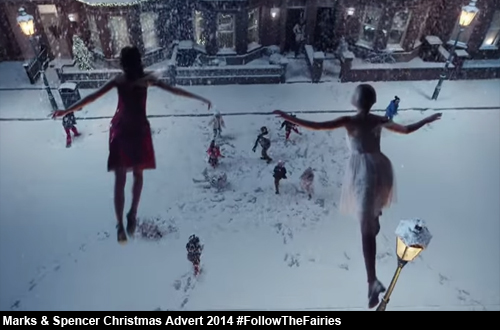Marketers should be embracing user generated content to help tell their brand story.
‘Tis the season for holiday marketing campaigns. With Christmas imminent, the UK’s leading brands are clamoring to warm our hearts, from Marks and Spencer’s ‘#FollowTheFairies’ activation to Sainsbury’s partnership with the British Legion.
Aspirational campaigns like these certainly capture consumer attention, but many of them still miss out on one of the biggest untapped resources in marketing history: user generated content. UGC is more trusted by consumers than any other kind of media, it takes zero internal resources to create and consumers create over two billion pieces of it every day.It’s a bona fide marketing asset… If you understand how to utilise it.
Take Marks and Spencer for example; their fairies are spreading Christmas cheer all over the UK, giving away Christmas trees, surprising schoolchildren with snow, delivering gifts to night shift workers, etc. And the people experiencing these random acts of kindness are uploading tons of photos, videos and happy status updates all over Facebook, Twitter and Instagram. But right now all of that beautiful, heartwarming content lives and dies on those social networks, where a very limited number of people actually see it. So as a consumer, if you don’t follow Marks and Spencer (or all of the people talking about the campaign on social media), you’ll never hear those stories.
But what if Marks and Spencer could capture all the best images, videos and comments from real people about that campaign and weave it into their own assets — things like their website, mobile app, digital ads or in-store displays? As social networks become an increasingly difficult place to reach audiences, a growing number of marketers are doing just that — using content created by their own customers to build unique content experiences on their own properties.
The value of UGC isn’t unique to just social media campaigns. Leading brands and publishers — from Sony PlayStation to Universal Music Group to Time Out London — are building ways for their audiences to engage with them on an ongoing basis. User reviews on product pages help prospective buyers make better purchasing decisions, comments. Chats allow exploratory visitors to ask questions and engage with a brand. An incredible user-submitted photo in a well-placed ad can catch the attention of a potential customer.
The top three challenges facing content marketers today are producing engaging content, producing enough content and producing content within a limited budget. UGC is poised to solve all three, but only if marketers start thinking about it as a full-fledged marketing asset. This means integrating UGC throughout the customer journey, across properties and devices — and in a way that adds real value for the consumer.
Brands spend millions of pounds on Christmas marketing campaigns each year, but often times the most inspiring stories come from real people who are touched by them. Your consumers are telling your brand story for you — all you need to do is listen.






